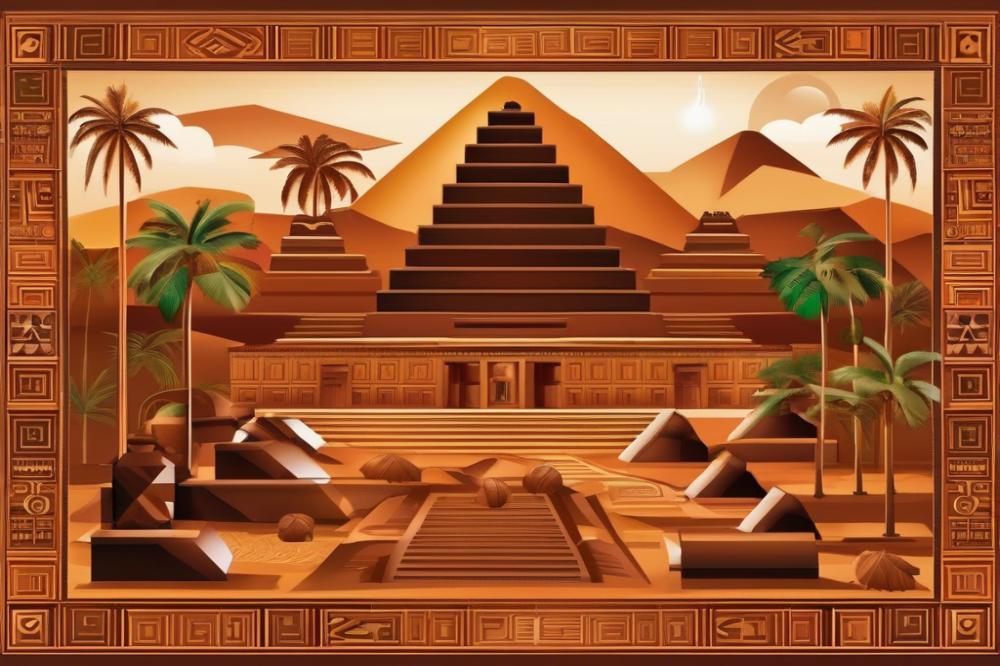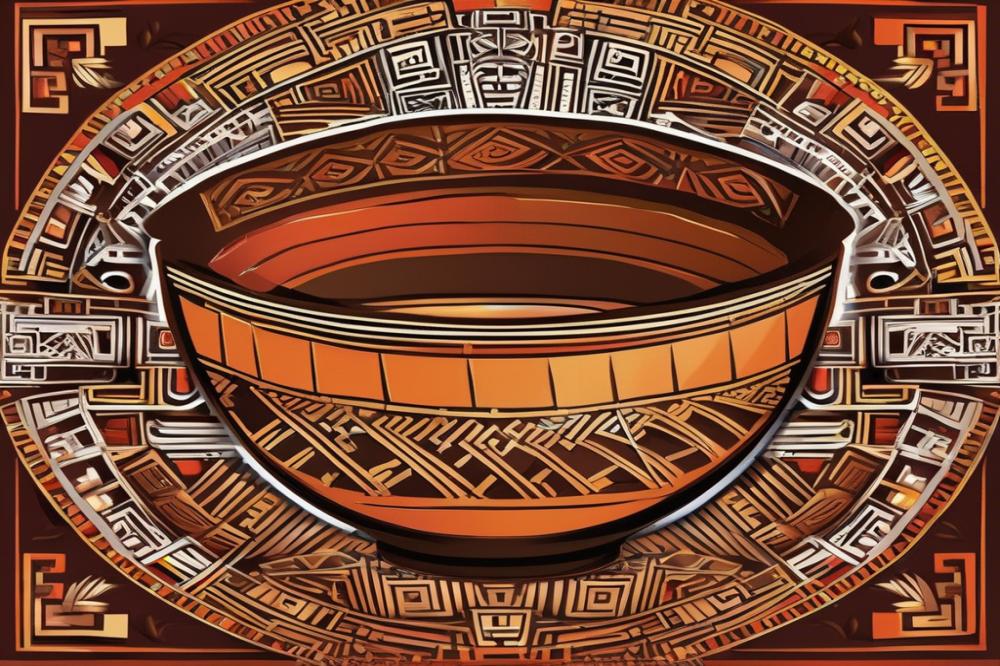Introduction
Chocolate has deep roots that trace back to ancient times. It originally comes from the cacao tree, which thrived in the tropical regions of Mesoamerica. This precious plant played a vital role in the lives of many Indigenous peoples, shaping their societies in remarkable ways.
Cacao was more than just a food source; it held significant cultural importance. The Olmecs, one of the earliest Mesoamerican civilizations, were the first to cultivate cacao around 1500 BCE. They likely used it in special rituals and believed it had divine qualities. Over time, the Mayans and Aztecs also embraced cacao, incorporating it into various aspects of their daily lives.
For the Mayans, cacao was often transformed into beverages consumed at important ceremonies. They believed that these drinks connected them to their gods. Similarly, the Aztecs valued cacao so highly that it was used as currency. This highlights the economic trade surrounding cacao, which was essential for wealth and power in their societies.
Ancient rituals often included cacao, symbolizing everything from fertility to life. In these cultures, it was sometimes regarded as the food of the gods. The rich history of cacao reveals much about the values and practices of these Mesoamerican Cultures. To this day, the legacy of cacao and its transformation into Chocolate continues to captivate hearts and tastes worldwide.
The Origins of Cacao in Mesoamerica

Historical evidence shows that cacao has deep roots in ancient Mesoamerican Cultures. Archaeological findings suggest that people have cultivated cacao trees for over three thousand years. Remnants of these plants have been found in sites associated with the Olmecs, hinting at their significant role in early cacao use.
The geography of Mesoamerica provides ideal conditions for growing cacao. Rich volcanic soil and a climate that includes both humidity and warmth create perfect environments. Regions like the Gulf Coast of Mexico boast conditions that are particularly favorable for this valuable crop.
The Olmecs are recognized as the earliest known users of cacao. They likely consumed it in beverage form, perhaps during important ceremonies or rituals. This early civilization set the stage for subsequent cultures like the Mayans and Aztecs to incorporate cacao into their social customs.
Cacao held substantial economic significance for these societies. Trade networks flourished based on this valuable crop, with cacao beans often used as currency. Both the Aztecs and Mayans integrated cacao into their daily lives, highlighting its cultural importance in ceremonies and special events.
Utilizing cacao in ancient rituals helped solidify its status. From royal gatherings to everyday celebrations, beverages made from cacao became an essential part of Mesoamerican life. The legacy of cacao continues to echo through history, showcasing its vital role in the agricultural practices of these early civilizations.
Cultural Significance of Chocolate among the Mayans

Mayan Rituals and Ceremonies Involving Chocolate
Mayan culture held cacao in high regard. Ancient rituals often included the preparation and consumption of beverages made from cacao. These ceremonies were significant events. They brought communities together, reinforcing social bonds. The act of drinking this special beverage was a sacred moment. It marked important occasions, such as weddings or harvests.
Use of Chocolate Beverages in Religious and Social Gatherings
Beverages derived from cacao were central to religious practices. Mayans believed gods gifted cacao to their people. This belief made the drink even more important in rituals. Social gatherings also featured cacao beverages. It was a way to celebrate life and unity among families and friends. The effervescent cocoa, often flavored with spices, delighted palates and symbolized hospitality.
Symbolism of Cacao in Mayan Mythology and Nobility
Myths surrounding cacao were rich and layered. Some stories portrayed it as a food for the gods, deserving reverence. Nobility often used cacao as a status symbol. Wealthy families frequently served cacao drinks, showcasing their affluence and social standing. Economic trade in cacao beans reflected its high value, making it integral to their society. Cacao even played a role in agriculture, as crops thrived in the region’s fertile lands.
The Aztec Embrace of Chocolate
The Aztecs held cacao in the highest regard. For them, it was much more than just a food product. This valued commodity served as both a luxury item and a form of currency. People often traded cacao beans, using them in economic exchanges for goods and services. Wealthy individuals enjoyed beverages made from cacao in elaborate ceremonies. Commoners might barter with beans for necessities.
Rituals played a significant role in Aztec life. Chocolate was central to their ancient traditions and religious practices. The drink was served during important festivals and ceremonies, signifying its cultural significance. Priests used cacao in offerings to the gods, believing it to carry divine power. Couples often drank it during wedding rituals, symbolizing unity and love.
In Aztec society, cacao beans extended beyond culinary uses. Agriculture thrived with the cultivation of cacao, as it became crucial for trade. The ruling class flaunted their wealth through extravagant displays involving this beverage. Preparing it involved intricate processes, with spices and flavors enhancing its appeal. The popularity of cacao influenced many aspects of daily life and social interactions.
As time passed, the Aztecs established a thriving economy centered around this precious bean. Markets bustled with activity as merchants sold cacao alongside other goods. This trade not only provided sustenance but also promoted cultural exchange among neighboring tribes. Even the Olmecs and Mayans recognized the bean’s value, connecting their own traditions to its allure.
Economic Trade and the Role of Chocolate
Trade networks flourished in ancient Mesoamerica, connecting various cultures through the exchange of valuable goods. Cacao was among these treasures. The Aztecs, Mayans, and Olmecs developed intricate systems to trade it across vast distances. Traders moved cacao beans along routes that spanned jungles, mountains, and valleys. These networks encouraged cultural interactions and contributed to the region’s economic growth.
An important factor in ancient economies, cacao became a cornerstone for many societies. Its cultivation required careful agricultural practices. Farmers dedicated their land to cacao trees, which thrived in the humid climate of the region. The harvest yielded not only beans but also prosperity for communities. Some even used cacao beans as currency, allowing people to buy food and other goods.
This specific product was not merely a source of nutrition. It carried deep cultural significance in various rituals and ceremonies. For the Mayans, cacao beverages often appeared in sacred events. The Aztecs served it during celebrations or important gatherings. Drinking this beverage symbolized luxury and was restricted to nobles or elite members of society.
Cacao also acted as a status symbol. Those who consumed the beverage were often viewed with reverence. Wealthy individuals showcased their access to cacao, setting themselves apart from commoners. In this regard, cacao became intertwined with social classes. Over time, it transformed from a simple food item to an indicator of prestige.
Ultimately, cacao played a vital role in shaping Mesoamerican economies. Economic trade in cacao not only bolstered financial structures but also influenced societal norms. As trade networks expanded, so did the reputation of this precious bean. It secured a lasting legacy in the history of the Aztecs, Mayans, and Olmecs. Their societies thrived through the unique intertwined relationships with cacao.
Agricultural Practices Surrounding Cacao
The ancient Mesoamerican cultures, including the Aztecs, Mayans, and Olmecs, had intricate methods for cultivating cacao. They relied on techniques that maximized the yield of this important crop. Shade trees were often planted alongside cacao trees. This practice protected cacao from harsh sunlight and created a suitable environment for growth.
Sustainable farming was crucial to their success. Farmers practiced crop rotation and intercropping. These methods enriched the soil and supported biodiversity. Fields often included maize, beans, and squash, which helped prevent soil depletion. Such practices demonstrate respect for the land and its resources.
The timing of cacao harvests held deep seasonal significance. The harvest season typically aligned with specific rituals and celebrations. It was during these times that communities would gather for ceremonies. Cacao was not just food; it was integral to their social and spiritual lives. Various beverages made from cacao played a central role in these occasions.
Throughout their societies, cacao was more than a crop. The Aztecs used it in economic trade, creating a valuable exchange system. They even had a concept of wealth tied to cacao beans. Meanwhile, the Mayans consumed cacao in special drinks during spiritual events. Ancient rituals often included cacao, emphasizing its cultural importance. Each civilization appreciated cacao not only for consumption but also for its broader significance in community and economy.
Final Thoughts on Cacao’s Cultural Impact
The importance of cacao in ancient Mesoamerican societies cannot be overstated. The Aztecs, Mayans, and Olmecs all regarded this bean as sacred and integral to their customs. It served not just as a food source but also as a source of energy, an ingredient in rituals, and a symbol of wealth. Through various preparations, these cultures blended it with spices and sometimes even made it frothy, creating a drink that was both invigorating and socially significant.
Today, the legacy of these ancient traditions continues to influence modern lifestyles. Many people still enjoy chocolate as a treat, while local artisans honor historical recipes. Festivals around cacao celebrate its rich heritage, inviting communities to reflect on its deep roots. This connection to the past fosters a greater appreciation for what the substance represents.
Additionally, the historical significance of cacao extends far beyond ancient borders. Its journey from the Americas to Europe transformed global culinary practices. Chocolate became a luxury item in many societies, symbolizing indulgence and sophistication. Even in contemporary times, it plays a role in social dynamics and cultural exchanges. As consumers increasingly seek ethical sources, the lore surrounding cacao enhances its allure and reinforces its developing narrative.



